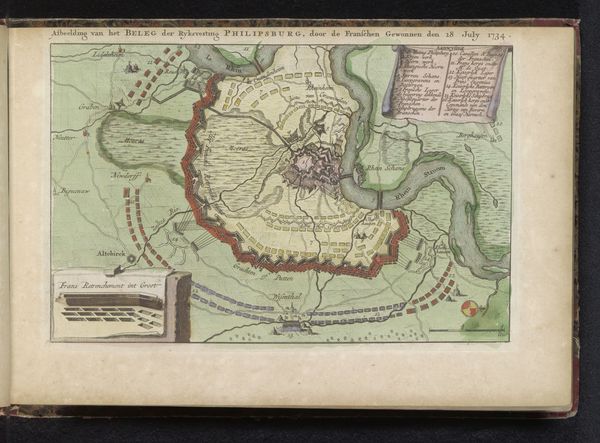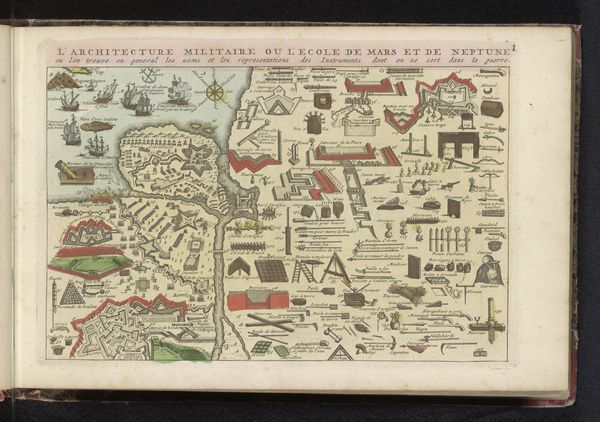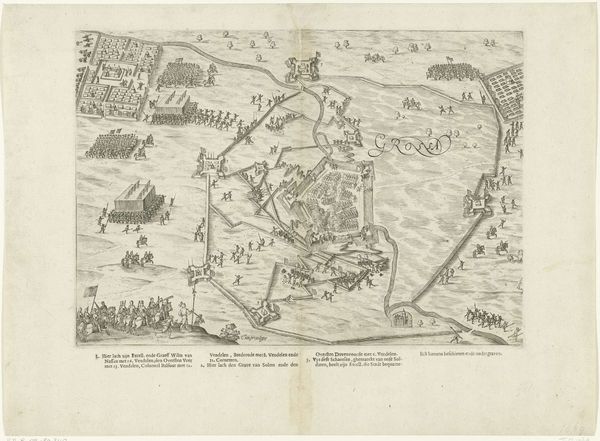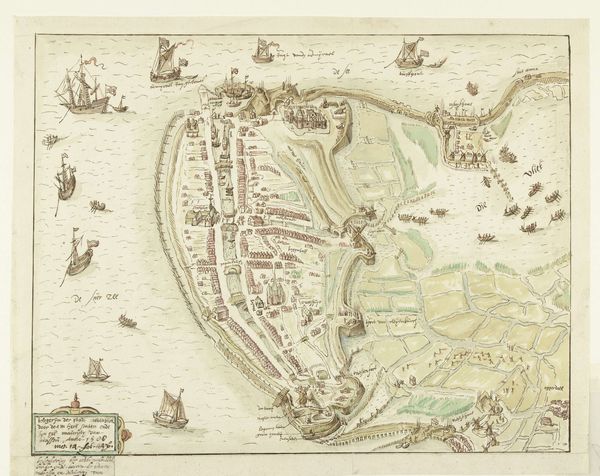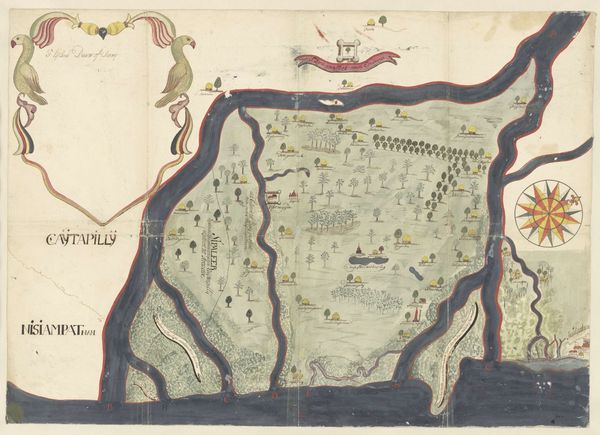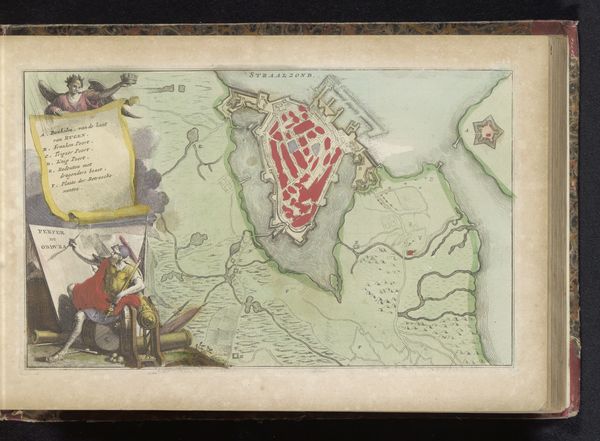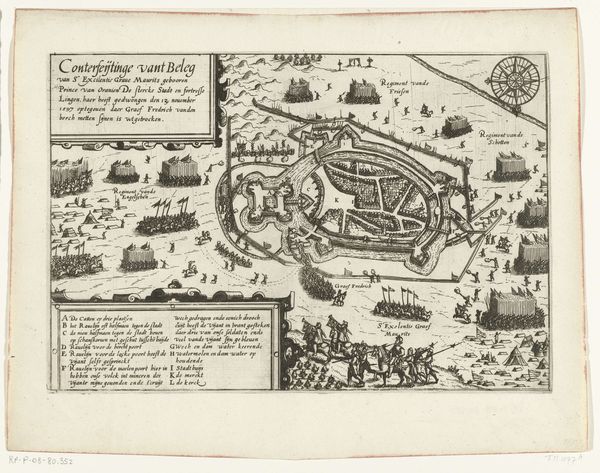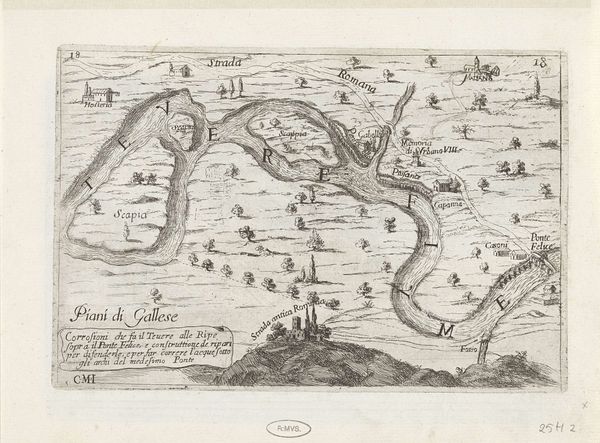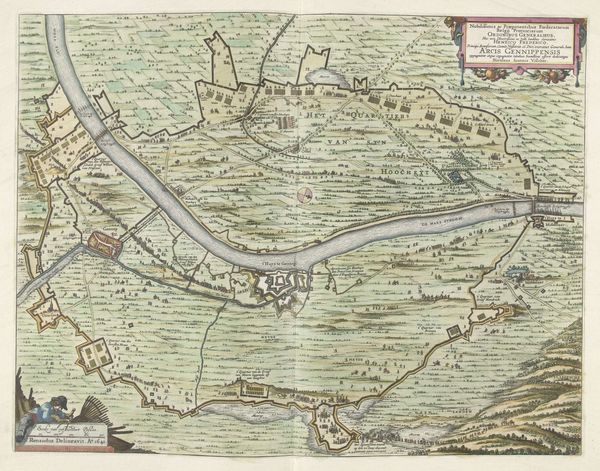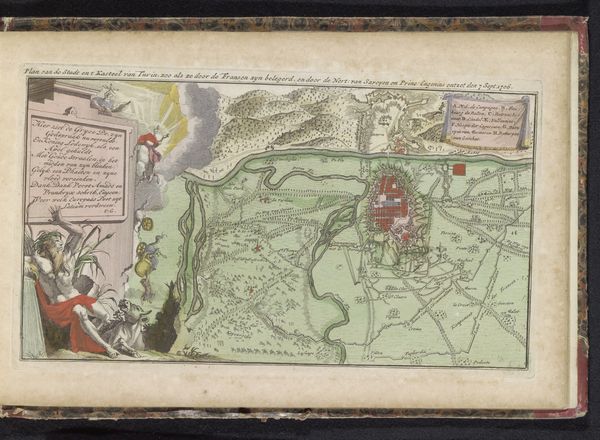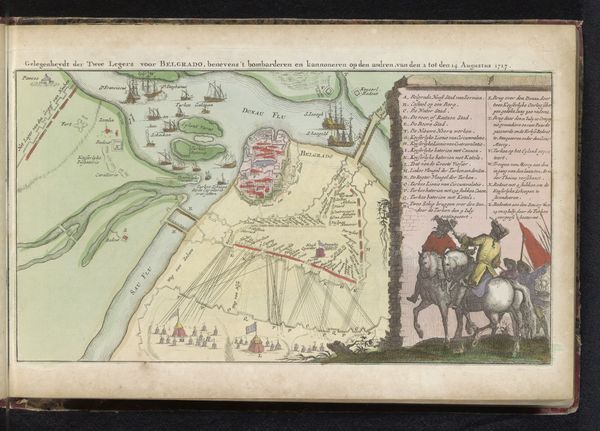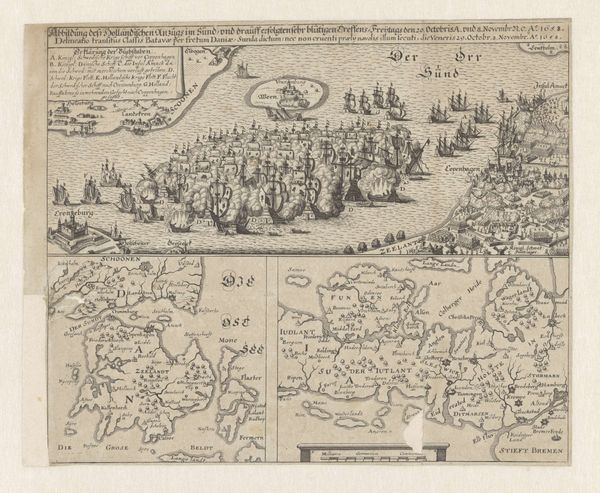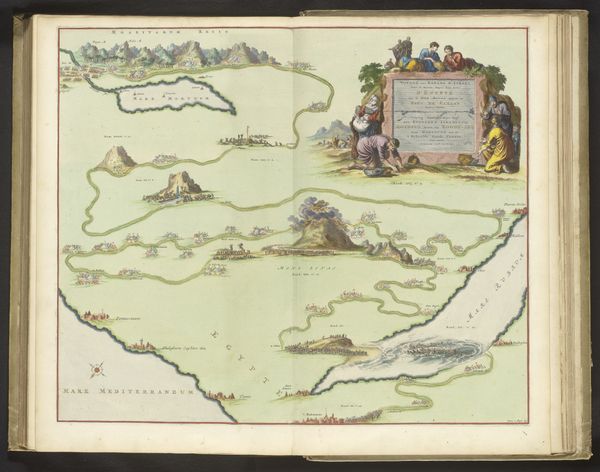
drawing, paper, watercolor, ink
#
drawing
#
baroque
#
landscape
#
paper
#
watercolor
#
ink
#
history-painting
#
academic-art
#
miniature
Dimensions: height 160 mm, width 267 mm
Copyright: Rijks Museum: Open Domain
Curator: Looking at this miniature drawing from 1735 entitled "Slag bij Petrovaradin, 1716", rendered in ink, watercolor, and paper, one immediately appreciates the artist's painstaking attention to detail. What stands out to you? Editor: It's unsettling. All these neat, tiny blocks of men arrayed for battle... there's something chilling about rendering human conflict so clinically, almost abstractly. The colors are gentle, but they belie the violence they represent. Curator: Indeed. The drawing, although made almost two decades after the Battle of Petrovaradin in 1716, shows the deployment of forces— the imperial army against the Ottomans. Consider how this kind of symbolic representation can perpetuate or even glorify martial endeavors. Editor: It's definitely a visualization of power. This bird’s-eye view isn’t about individual suffering but rather the strategic overview, the commander's perspective. Who was this artist? What purpose did this meticulous depiction serve? Curator: That's a great point. The artist is anonymous, and the work sits within a tradition of academic art. Battle plans were carefully crafted and often disseminated to underscore the efficacy and even the divinely ordained authority of rulers and commanders. Think of how maps and strategic displays become symbols of dominance and control. Editor: And that detachment allows those in power to distance themselves from the consequences of war. Seeing the soldiers reduced to these neat formations… it masks the blood, the trauma, the long-term repercussions of the battlefield. The miniature style only amplifies that sense of removed control, almost like a game. Curator: Absolutely. Furthermore, consider the baroque sensibilities, with a focus on grand themes, order, and visual spectacle. This aesthetic glorifies events rather than probing the deeper implications. Editor: Right. We see conflict filtered through a lens of established power dynamics, echoing the rhetoric used to justify such actions throughout history. Understanding that is so vital today. Curator: And to think, what looks like a charming miniature hides narratives of profound sociopolitical meaning! Editor: Absolutely. The layers revealed through context deepen the experience, and, maybe, challenge our own preconceptions about how history is depicted and who gets to do the depicting.
Comments
No comments
Be the first to comment and join the conversation on the ultimate creative platform.
